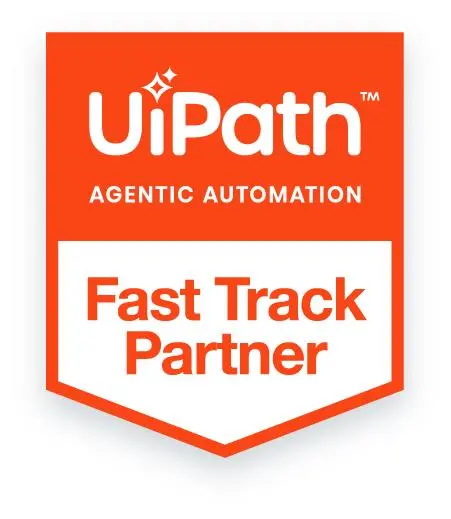
Key Takeaways
- Hyperautomation transforms every step of the patient journey—from appointment to discharge—making healthcare faster, safer, and more convenient for patients while reducing manual work for staff.
- By automating repetitive tasks such as data entry, billing, and scheduling, hospitals free up doctors, nurses, and staff to focus more on delivering high-quality patient care.
- Automation tools ensure data accuracy, maintain digital records, and support compliance with regulations like HIPAA through secure, traceable, and standardized processes.
- Hyperautomation optimizes hospital workflows and reduces costs by connecting departments and systems, eliminating redundancy, and enabling more intelligent allocation of beds, staff, and equipment.
- With chatbots, AI reminders, and mobile access to records and prescriptions, patients remain informed and engaged in their care, leading to increased satisfaction and trust in the system.
The healthcare sector is not just about attending to patients and conducting surgeries. It is about offering a smooth, safe, and personalized experience to the patients, keeping them warm and comfortable under one roof. From the time they book an appointment with the doctor to paying the final bill, patients should experience a hassle-free procedure. However, keeping all these considerations in mind, hospitals and clinics are under constant pressure. They manage too much paperwork, handling numerous patients with insufficient staff and rising costs. All of these challenges can make it difficult to provide patients with the care they deserve.
However, a suitable solution for such challenges is hyperautomation. It utilizes beneficial technologies, including robotic process automation, machine learning, and artificial intelligence, to help clinics and hospitals operate quickly.
Also read: HyperAutomation: Beyond RPA to Full-Scale Enterprise Autonomy
What is HyperAutomation?
Hyperautomation is an effective technique for operating more efficiently and quickly. Utilizing a combination of innovative technologies, it helps improve the whole procedure, from start to finish. Furthermore, it helps in identifying techniques to automate as much as possible. It gathers all the essential data, software, personnel, and machines to function together as a cohesive unit.
The key technologies that make hyperautomation work wonders are
1. Robotic Process Automation
These are similar to software or digital bots that assist healthcare professionals in conducting repetitive tasks. For example, hyperautomation can help them copy and paste data, update patient histories, and send emails without human error and without fatigue.
2. Artificial Intelligence
Artificial intelligence allows machines to think wisely. This way, they can address challenges and make informed decisions, just as humans do. In the healthcare sector, artificial intelligence can aid in identifying illnesses, interpreting medical images, and providing doctors with the necessary recommendations.
3. Machine Learning
This is where machines gather essential details from data and improve themselves with time. For example, a system can gather all the knowledge to detect unusual patterns in patient records that indicate a health concern.
4. Intelligent Document Processing
Hospitals handle a significant amount of paperwork. IDP helps by reading and understanding documents, such as prescriptions, lab reports, or insurance forms, and automatically extracting necessary information.
5. Business Process Management
This helps organize how tasks flow from one step to the next, ensuring that the correct information is directed to the appropriate people or systems at the right time.
6. Low-Code/No-Code Platforms
These enable the development of applications that require advanced deep programming skills. Hospital staff can use them to quickly create forms, apps, or dashboards without waiting for the IT team’s assistance.
So, why is it called “Hyper” Automation?
It’s called “Hyper” because it’s not just about doing one job faster — it’s about transforming entire workflows. It consists of various departments, including reception, billing, pharmacy, and labs. It combines human effort with machine speed. It helps hospitals deliver care more efficiently, reduce costs, and give patients a better experience from start to finish.
Why Hospitals Need Hyperautomation?
Hospitals are busy, complex places. Every day, they handle hundreds of patients. Behind every patient, numerous tasks are happening in the background. These tasks involve handling paper, communicating with other departments, and following strict rules, ensuring that every task is conducted legally and safely.
Some of the significant challenges hospitals face today:
1. Tons of Paperwork
Hospitals manage a wide range of documents, including patient registration forms, prescriptions, test results, bills, insurance claims, consent forms, discharge summaries, and other relevant documents. Most of this is done manually, which requires a significant amount of time and increases the likelihood of human error.
2. Many departments are working separately
Healthcare involves multiple teams: admissions, nursing, diagnostics, pharmacy, surgery, billing, and discharge. These departments often work in silos, using different systems and tools. as a result, there are delays, communication gaps, and duplication of work.
3. Complex Rules and regulations
Complex rules and regulations require hospitals to follow strict guidelines to protect patient privacy and comply with legal requirements, such as the Health Insurance Portability and Accountability Act (HIPAA). Effectively managing compliance requires accurate documentation, proper access controls, and secure data sharing.
4. High Patient Expectations
Patients today want more than just treatment — they expect a smooth and modern experience. They want to book appointments online, access reports quickly, receive updates on their phones, and avoid long waiting times. They also expect transparency about procedures and costs.
Hyperautomation helps hospitals by integrating various systems, departments, and tasks, thereby creating a seamless workflow. It brings all the moving parts together and automates as much as possible. Here’s how it helps:
1. Reduces Manual Work
Routine tasks, such as data entry, appointment scheduling, insurance verification, and report generation, can be automated using bots and AI tools. This saves hours of work for doctors, nurses, and admin staff, allowing them to focus on patients instead of paperwork.
2. Speeds Up the Patient Journey
From check-in to discharge, hyperautomation can streamline each step. Patients spend less time waiting, get test results faster, and experience fewer delays in billing and pharmacy services.
3. Improves Accuracy and Compliance
Automation reduces human error, keeps digital records well-organized, and ensures every step follows legal guidelines. It also creates a clear audit trail, which is essential during inspections or reviews.
4. Enhances the Patient Experience
With automation, hospitals can offer digital services like online check-ins, e-prescriptions, automated reminders, and secure report sharing. This creates a smoother, more modern experience for patients and their families.
5. Optimizes Resources and Reduces Costs
By automating repetitive tasks and improving workflow efficiency, hospitals can do more with fewer resources. This helps control operating costs — a key concern for healthcare providers today.
The Patient Journey: Before vs After Hyperautomation
Let’s take a closer look at a typical patient’s journey through a hospital — and how Hyperautomation makes each step smoother, faster, and better.
1. Appointment Booking
Before Hyperautomation:
Patients typically had to call the hospital or visit its website to schedule an appointment. Often, they wait on hold, encounter front-desk staff, and sometimes face errors in booking or availability. There are no real-time updates, and rescheduling takes time and effort.
With Hyperautomation:
AI-powered chatbots are available 24/7 to book appointments through websites or mobile apps. RPA bots instantly check doctor availability and confirm bookings. Reminders are sent automatically by SMS or email to avoid no-shows. No human errors, no waiting on the phone.
Example:
If a doctor becomes unavailable, a bot automatically reschedules the appointment and sends a notification to the patient instantly.
2. Pre-Visit Forms and Registration
Before Hyperautomation:
Patients fill out paper forms at the hospital, resulting in long queues. The front-desk staff then re-enter this data into hospital systems — a time-consuming and error-prone process.
With Hyperautomation:
Patients fill out digital forms from the comfort of their home. Intelligent Document Processing (IDP) tools extract details from uploaded documents like ID cards or insurance cards and feed them directly into the hospital system — no extra typing needed.
Example:
A patient uploads a photo of their insurance card. A bot extracts the relevant details automatically and fills in the insurance section of the form.
3. Check-In and Admission
Before Hyperautomation:
Check-ins are manual. Staff verify all documents and assign the ROA process, which can take time and potentially cause delays. Patients are given paper wristbands and manually tracked.
With Hyperautomation:
Patients can check in using QR codes at self-service kiosks or through mobile apps. Room assignments are automated based on treatment needs, bed availability, and discharge schedules. Patients receive digital wristbands linked to real-time tracking.
Example:
An AI system predicts which rooms will become available soon and preassigns beds to incoming patients, thereby reducing wait times.
4. Diagnosis and Treatment
Before Hyperautomation:
Doctors manually requested lab tests and often had to wait for the results to be returned. There may be delays in reporting, and doctors sometimes need to follow up repeatedly with labs.
With Hyperautomation:
AI tools suggest tests based on the patient’s symptoms and medical history. Bots automatically place lab orders and track their progress. Once results are ready, alerts are sent instantly. AI also helps doctors make better treatment decisions by suggesting best practices.
Example:
An AI system flags abnormal lab values, such as dangerously low oxygen levels, and alerts the doctor immediately for prompt action.
5. Billing and Insurance
Before Hyperautomation:
Bills are prepared manually, with different departments entering costs. Insurance claims are handwritten or typed and can take weeks to process. Patients need to follow their advice.
With Hyperautomation:
Bots collect data on every service — lab tests, medication, doctor visits — and generate detailed bills. Insurance forms are auto-filled and submitted digitally. Claim bots follow up and notify patients about status updates in real time.
Example:
A patient receives a digital bill and real-time insurance approval just hours after the doctor’s visit, not weeks later.
6. Discharge and Follow-Up
Before Hyperautomation:
Patients often waited for final documents and prescriptions to be completed. There is no clear communication regarding follow-up visits or medications.
With Hyperautomation:
With HyperAutomatBots, prepare discharge summaries and digital prescriptions that are sent directly to the patient’s phone. Follow-up appointments are automatically scheduled, and patients receive reminders for medication checkups via the app, SMS, or email.
Example:
Before leaving, a patient receives a comprehensive discharge packet, including a medicine schedule and follow-up appointment details, all without needing to request them.
The Technologies Behind Hospital Hyperautomation
| Technology | Role in Patient Journey |
| RPA (Robotic Process Automation) | Automates repetitive tasks like data entry |
| AI (Artificial Intelligence) | Analyzes data and makes smart decisions |
| IDP (Intelligent Document Processing) | Reads and extracts data from documents |
| Chatbots | Handle appointment booking, FAQs, and support |
| Process Mining | Finds areas of improvement in hospital workflows |
| Low-Code Apps | Quickly create patient-facing apps and port hyperautomation |
Final Thoughts
Hyperautomation in healthcare is not just about faster services; it’s about humanizing the patient experience by removing tedious, repetitive tasks, allowing staff to focus on what matters most: patient care.
Imagine a future where booking a doctor, getting treatment, paying bills, and recovering — all feel as smooth as ordering food from an app.
That future is already here, and Hyperautomation is making it happen.








